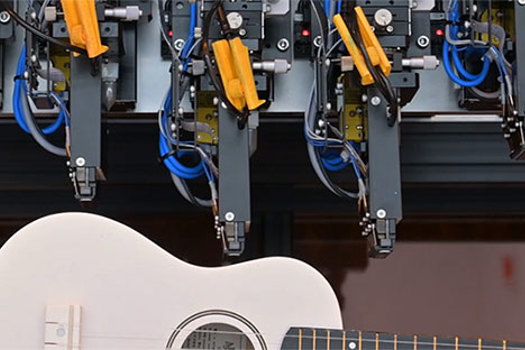The world's first mass printed electronic circuit has been produced at Chemnitz University of Technology in Germany, with possible runs of more than a million.
The circuits were printed at speeds of up to 0.8m per second, breaking records for production speeds and signalling a breakthrough for polymer electronics.
An array of new printing opportunities for games, event management, advertising and marketing sectors, are now expected. One key application in the short-term is RFID systems identification tags, readable by radio frequency, that could one day replace the 40b barcodes printed worldwide everyday.
Polymers can depending on molecular structure have conducting, semi-conducting or even insulating electric properties.
The polymer molecules are printed in ultra-thin layers, one above the other, with microscopic accuracy. These polymers can be processed in a very similar way to ink.
"We used a variety of offset, gravure and flexographic technologies," said Professor Arved Hbler, head of print and media technology at Chemnitz University.
"But the printing of electronics puts completely new demands on materials, methods and machines different from those known in traditional printing."
Meanwhile, MAN Roland has been working on its own electronic printing for RFID systems. It is trying to perfect a cost-effective system of partially producing RFID tags on its printing presses.
For more information visit: www.printed-systems.de
Have your say in the Printweek Poll
Related stories
Latest comments
"Gosh! That’s a huge debt - especially HMRC! It’s a shock that HMRC allowed such an amount to be accumulated."
"Whatever happened to the good old fashioned cash job! At least the banks didn't take 2-3% of each sale. After 30 odd transactions that £100 quid you had has gone."
"It's amazing what can be found on the "web" nowadays!"
Up next...

Turnover boosting wins
FDM in bumper triple contract win

Interim boss already in place
Royal Mail chief executive quits

Prints onto complex objects





